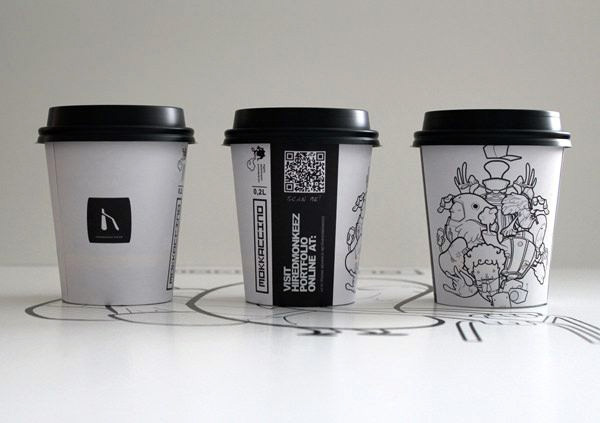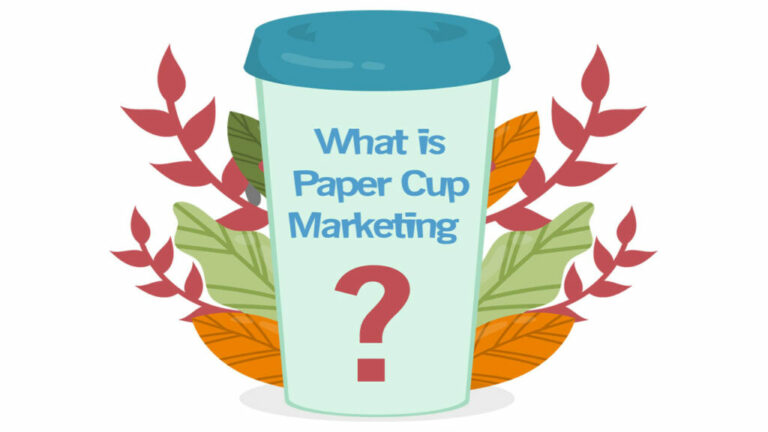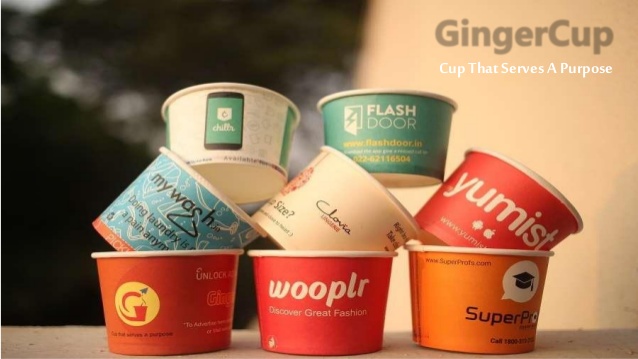Paper Cup Advertising in the Digital Age: Challenges and Opportunities
In today’s digital world, where attention spans are quick and online interactions taking the front seat, paper cup advertising might seem like a relic of the past.
However, paper cup advertising still holds significant power, especially in the age of social media and influencer marketing. Paper cups offer a unique opportunity to connect with consumers in a tangible and memorable way, providing a physical reminder of a brand’s message amidst digital supremacy.
Despite its enduring relevance, paper cup advertising faces unique challenges in the digital age. One of the primary hurdles is the ever-increasing competition for consumer attention.
In a world saturated with digital stimuli, capturing attention with a mere paper cup can be a tough task. Moreover, the disposable nature of paper cups limits their potential for long-term engagement and brand recall. Consumers accustomed to interactive and personalized digital marketing experiences may find a simple paper cup lacking in engagement.
Challenges paper cup advertising has in digital arena
Paper cup advertising, a traditional and tangible medium, faces distinct challenges in the fast evolving landscape of digital marketing.
Difficult to access campaign performance
In this era of rapid technological advancement, tracking the efficacy of paper cup campaigns, perhaps poses most significant hurdle.
Unlike digital platforms that offer robust analytics, traditional paper cups lack the metrics needed to measure engagement and performance, making it challenging for marketers to assess the success of their campaigns accurately.
The challenge in targeting a specific audience
Reaching a specific target audience becomes a complex task in the absence of the precision that digital targeting tools provide. Digital platforms allow advertisers to define and target their audience based on demographics, interests, and online behavior.
Paper cup advertising, on the other hand, relies on broader distribution channels, making it harder to ensure that the message reaches the intended consumer segment.
The short life span of paper cup
Another challenge arises from the inherently fleeting nature of paper cups. Traditional cups are typically used for a short duration, limiting the exposure time for advertisements.
This brevity contrasts sharply when compared with the persistent and ever-accessible nature of content on digital platforms. Marketers must contend with the reality that the impact of their message on a paper cup is transitory compared to the continuous visibility achievable through digital channels.
QR Codes bridging the gap between digital and tangible world
Amid these challenges, integrating digital elements into paper cup campaigns emerges as a potential solution. One approach involves leveraging QR codes strategically placed on cups.
These codes act as a bridge between the physical and digital worlds, redirecting consumers to interactive online content. This fusion of traditional and digital elements transforms a paper cup into a touchpoint for a more engaging brand experience.
Opportunities for paper cup advertising in the digital age

While challenges exist, the digital age offers paper cup advertising numerous opportunities to innovate and excel.
QR Code powered advertisement Campaigns
One significant opportunity lies in the incorporation of QR code campaigns. By printing unique QR codes on cups, advertisers can unlock interactive experiences for consumers. These experiences may include providing instant discounts, access to exclusive content, or participation in online contests linked to the QR code.
Connecting Consumers through Social Media
Social media integration presents another avenue for enhancing paper cup advertising in the digital age. Encouraging consumers to share their cup moments on platforms like Instagram or Twitter can amplify the reach of the campaign. This user-generated content not only extends the visibility of the brand but also fosters a sense of community around the product.
Incorporating augmented reality (AR)
Augmented reality (AR) offers a cutting-edge opportunity for paper cup advertising to create immersive brand experiences. By incorporating AR elements on cups, such as interactive animations or 3D models triggered by smartphone cameras, advertisers can make each sip a memorable and engaging moment for consumers.
Personalization for consumer engagement
In the digital realm, personalization is a key driver of consumer engagement. Paper cup advertising can leverage this trend by tailoring content based on consumer preferences and behaviors.
By employing data analytics, marketers can explore insights into consumer habits, enabling them to craft more personalized and relevant messages. This customization enhances the overall user experience, making the interaction with a paper cup more meaningful for the consumer.
Near-field communication (NFC)
Embracing near-field communication (NFC) technology in paper cup advertising opens new possibilities. By embedding NFC chips in cups, brands can facilitate instant connectivity with smartphones.
This connectivity can unlock features such as interactive games, access to loyalty programs, or the ability to share branded content on social media directly from the cup.
Harnessing both digital and traditional strategies

The true potential of paper cup advertising unfolds when it harnesses the strengths of both traditional and digital strategies. The integration of NFC and QR codes seamlessly connects the physical cup to the digital world. QR codes, for instance, allow consumers to scan and access online content, promotions, or additional information directly related to the advertised product.
Social media has become a powerful ally in amplifying the reach of paper cup campaigns. Integrating specific hashtags or encouraging users to share their experiences online transforms a momentary interaction with a paper cup into an ongoing conversation on digital platforms. This integration not only extends the lifespan of the campaign but also capitalizes on the vast reach of social networks.
Geotargeting, a feature prevalent in digital marketing, can be adapted to enhance the impact of paper cup advertising. By carefully distributing cups in specific locations, marketers can ensure that their promotions reach the right audience at the right time. This localization strategy adds a layer of relevance to the campaign, making it more likely to resonate with the target demographic in a particular area.
Combining the tangibility of paper cups with the interactivity of digital platforms creates a holistic brand experience. NFC technology enables consumers to engage with the brand in real-time by tapping their smartphones on the cup. This interaction can unlock dynamic content, such as videos, product information, or even direct links to e-commerce platforms for seamless purchasing.
Encouraging user-generated content through online contests linked to physical cup interactions fosters community engagement. Consumers become active participants in the brand narrative, sharing their experiences and creating a sense of camaraderie among users. This participatory element adds depth to the campaign, transforming it from a one-way message to a shared experience.
Key takeaways
In navigating the challenges of the digital era, paper cup advertising finds endurance through innovation. Embracing digital elements like QR codes and NFC technology transforms cups into interactive touchpoints. The blend of traditional and digital strategies amplifies brand visibility and engagement, unlocking new dimensions for advertising creativity.
Crucially, the adaptability of paper cup advertising showcases its evolution from a static medium to a dynamic player in the marketing landscape. The fusion of tangible cups with digital technologies signifies a harmonious marriage, promising a flavorful future for this traditional yet increasingly versatile form of advertising.
As the industry continues to embrace these innovations, marketers can draw essential lessons from the journey of paper cup advertising. It underscores the importance of staying aligned with technological trends, understanding consumer behavior, and creatively integrating digital solutions to enhance traditional mediums. Through this holistic approach, paper cup advertising not only navigates the challenges of the digital age but emerges as a vibrant and engaging avenue for brand communication.






